Pelvis
This section is title Pelvis but will refer to both the
pelvis and the lumbar part of the spine.
Lumbar Flexion - Extension
Lumbar flexion
is the “bending” or moving the body forward towards the legs. This
movement is done buy the lumbar part of the spine and not at the hip
joint.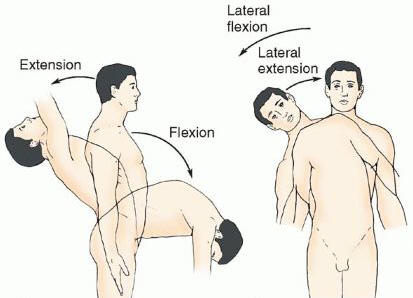 Range
of motion: 60°.
Range
of motion: 60°.
Lumbar extension will be taking the body backwards in the opposite
direction than the lumbar flexion. Range of motion: 25°.
Lumbar Lateral Flexion - Extension
Lumbar lateral flexion will be taking the body sideways.
Lumbar lateral extension is the opposite movement, bringing the body
back in neutral position. Range of motion: 25°.
Lumbar
Rotation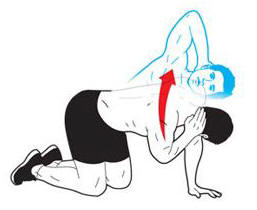
Lumbar rotation refers
to the rotary movement of the spine on the transverse plane. ... Each vertebra
is capable of moving in three directions (back and forth, lateral flexion, androtation),
and even though the movement at each joint is small, the spine as a single
structure has great flexibility and range of motion.
Range of motion: 15° It is difficult to separate from the
thoracic rotation (RoM of 30°) which together will produce a rotation of around
45° of the shoulder relative to the pelvis.
Lumbar flexion: Rectus Abdominis, Internal Obliques, External Obliques, Psoas
Major.
Lumbar extension: Lingissimus, Iliocostalis, Spinalis, Multifidus,
Quadratus Lumborum, Interspinalis Lumborum, Intertransvesarii
Lumbar lateral flexion: Quadratus Lumborum, Iliocostalis, Longissimus,
Multifidus, Intertransversarii.
Lumbar rotation: Internal Obliques, External Obliques, Iliocostalis,
Multifidus, Rotatores.
Mobility tests:
Thorax.
Thoracic and Lumbar spine mobility are considered together here.
Strength tests
:
Thorax.
Thoracic and Lumbar spine strength are considered together here.
Posture evaluation: Look for
pelvis and lumber spine misalignment.
FMS: Hurdle Step, Look for
compensation for hip mobility as pelvis tilt. Could also indicate a lack
of pelvis stability.
Inline Lunge: as for the Hurdle
Step.
Trunk Stability, trunk should
remain stable and straight.
Rotary Stability: spine should be
mobile enough to avoid influencing balance.
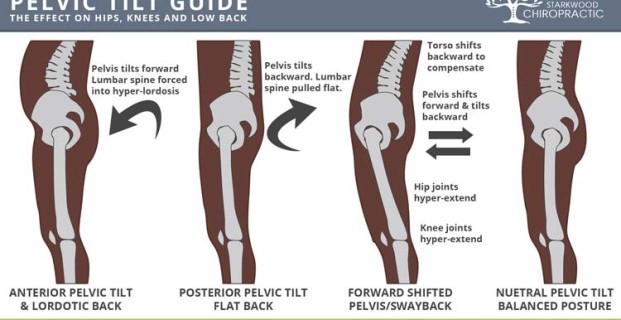 Posture evaluation: It is usually first noticed because of the
change of the lumbar spine shape. Most of the time it is accompanied by a
lack of alignment of the knee and/or shoulder.
Posture evaluation: It is usually first noticed because of the
change of the lumbar spine shape. Most of the time it is accompanied by a
lack of alignment of the knee and/or shoulder.
Pelvic tilt is the result of imbalance at the lumbar spine area but also
at the hip joint. It can be the result of a bad posture or apprear at
certain point of T&F movements, specially when running. Forward pelvis
tilt is the result of either or both the hip flexors and the lumbar extensors
been to short (the opposite movement muscles been too long). Backward
pelvis tilt is the result of either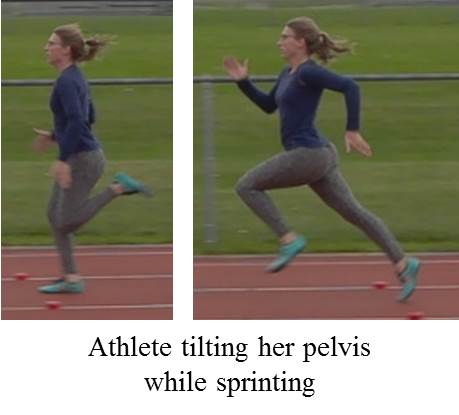 or both the hip extensors and the lumbar flexors been to short (the opposite
movement muscles been too long). The pelvis and the lumbar spince gain to remain
stable in most T&F event in order to improve the performance of the hip muscles
and prevent overuse injuries.
or both the hip extensors and the lumbar flexors been to short (the opposite
movement muscles been too long). The pelvis and the lumbar spince gain to remain
stable in most T&F event in order to improve the performance of the hip muscles
and prevent overuse injuries.
Corrective measures
Strength:
All pelvis
strength exercises.


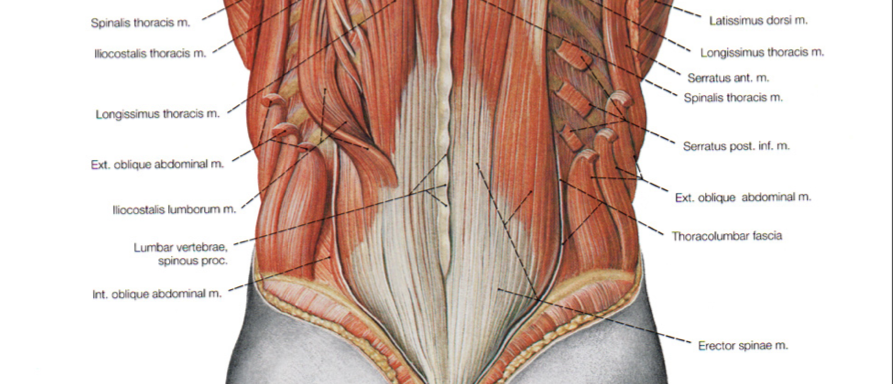


 or both the hip extensors and the lumbar flexors been to short (the opposite
movement muscles been too long). The pelvis and the lumbar spince gain to remain
stable in most T&F event in order to improve the performance of the hip muscles
and prevent overuse injuries.
or both the hip extensors and the lumbar flexors been to short (the opposite
movement muscles been too long). The pelvis and the lumbar spince gain to remain
stable in most T&F event in order to improve the performance of the hip muscles
and prevent overuse injuries.